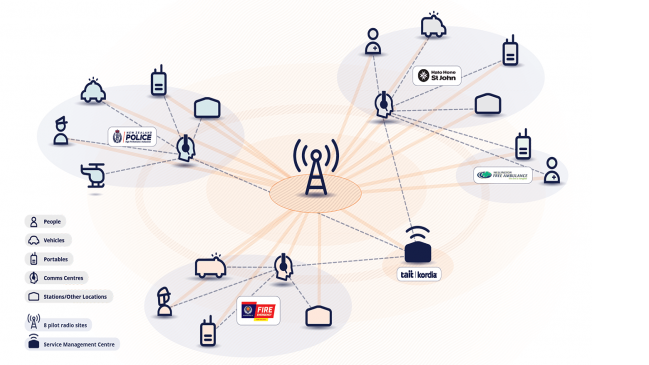
Kordia losing its group chief executive, Shaun Rendell, comes at a critical juncture for the company, which together with Tait Communications in Christchurch is working on the digital radio network part of the government’s new Public Safety Network (PSN).
Last week, Kordia announced that Rendell would resign for health reasons, following an unspecified accident. Rendell stepped up to the leadership role in 2019 after then chief executive Scott Bartlett was diagnosed with brain tumours that ultimately was fatal. Kordia announced today that Neil Livingston has been appointed as interim CEO, starting on April 2 this year. Meanwhile, Jason Fullerton-Smith has stepped in as the acting CEO of Kordia until Livingston takes over.
In 2022, Kordia and Tait Communications were awarded the Land Mobile Radio (LMR) component of the new PSN as part of a contract worth $1.4 billion in total over 10 years.
The two companies are developing a replacement digital two-way radio network, following the North American Project 25 (P25) set of standards. This will replace the current analogue communications network for New Zealand emergency services like the Police, Hato Hone St John, FENZ, and Wellington Free Ambulance.
The digital P25 network is encrypted and unlike the current analogue radios, protects against eavesdropping. Furthermore, the new digital network can also be used to transmit data and text messages.
It will be one of the biggest in the world when finished with over 450 sites, and some 25,000 devices supplied by Tait.
Rendell was one of the directors of the Tait Kordia Joint Venture Company until this week. He has been replaced by Kordia board member Ben Kepes.
Steve Ferguson, director of the Next Generation Critical Communications agency leading the project said there has been good progress on the Land Mobile Radio Network, when asked if there had been delays in the development work.
While there have been changes to some regional delivery dates, Tait and Kordia have committed to delivering the network’s last region by the contracted due date of mid-2026, according to Ferguson.
“Testing of the core network in a lab environment is well advanced to prove the network design works and can integrate into agency systems. Network management and monitoring tools are being implemented that will help ensure the network is running well for the emergency services,” Ferguson said.
A small-scale, fully functioning LMR network pilot site will be set up in South Canterbury, where the geography and terrain is similar to many areas in New Zealand, by the middle of this year.
No implementation changes for the LMR have been requested by the NGCC, Ferguson said.
A statement from the Tait Kordia Joint Venture by Jason Fullerton-Smith, and Dr Yoram Benit, the CEO of Tait Communications confirmed that the companies are on track to deliver the overall network on time.
However, changes are being made to the JV to deliver the network as agreed.
“Tait Kordia Joint Venture is making some changes to our operating structure, which will see more resources moving into the joint venture as we scale up,” Fullerton-Smith and Benit said.

We welcome your comments below. If you are not already registered, please register to comment
Remember we welcome robust, respectful and insightful debate. We don't welcome abusive or defamatory comments and will de-register those repeatedly making such comments. Our current comment policy is here.